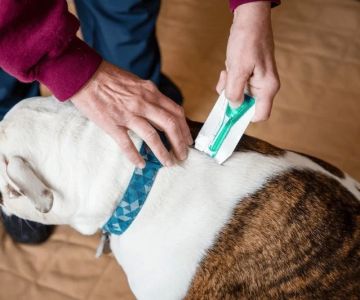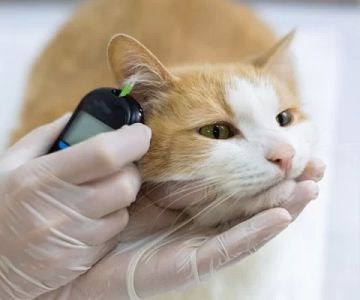How to Stop My Cat from Peeing Outside the Litter Box: Proven Solutions
- Understanding the Causes of Cat Peeing Outside the Litter Box
- Behavioral Issues Leading to Peeing Outside the Litter Box
- Medical Reasons for Peeing Outside the Litter Box
- Tips to Prevent Cat Peeing Outside the Litter Box
- When to Consult a Veterinarian
- Hidden Brook Veterinary Care for Cats
Understanding the Causes of Cat Peeing Outside the Litter Box
Many cat owners face the challenge of their cat peeing outside the litter box. This behavior can be frustrating, but it is important to understand that there are several reasons why your cat might be engaging in this behavior. By identifying the underlying cause, you can take appropriate action to stop your cat from peeing outside the litter box.
Common reasons for cats to pee outside the litter box include stress, territorial marking, dirty litter boxes, and medical issues. It is essential to consider both behavioral and medical factors when trying to address this issue effectively.
Behavioral Issues Leading to Peeing Outside the Litter Box
In some cases, peeing outside the litter box is a sign of a behavioral problem. Cats may engage in inappropriate urination as a response to stress or anxiety. Here are some common behavioral issues that may lead to this behavior:
1. Stress and Anxiety
Cats are sensitive creatures, and stress can significantly affect their behavior. Changes in the household, such as a new pet, a new family member, or moving to a new home, can lead to anxiety and result in peeing outside the litter box. It’s important to provide a stable, calm environment for your cat and offer reassurance during stressful transitions.

1946 S Christopher Columbus Blvd, Philadelphia, PA 19148, USA
See Details2. Territory Marking
Another common behavioral reason for peeing outside the litter box is territorial marking. Cats may urinate in areas outside the box to mark their territory. This is often seen in unneutered male cats but can also occur in female cats and neutered males. Providing multiple litter boxes and ensuring that your cat feels secure in its environment can help reduce marking behavior.
Medical Reasons for Peeing Outside the Litter Box
In addition to behavioral reasons, there are several medical conditions that may cause a cat to urinate outside the litter box. If your cat has a medical condition, it may associate the litter box with discomfort or pain, leading them to avoid it. Some of the common medical causes of inappropriate urination include:
1. Urinary Tract Infections (UTIs)
Urinary tract infections are a common cause of inappropriate urination in cats. UTIs can make it painful for cats to urinate, causing them to avoid the litter box and urinate elsewhere. If your cat is peeing outside the box and seems to be in pain while urinating, it’s important to consult with a veterinarian for a proper diagnosis and treatment plan.
2. Feline Lower Urinary Tract Disease (FLUTD)
Feline Lower Urinary Tract Disease (FLUTD) is a group of conditions that affect a cat’s bladder and urethra, leading to symptoms like frequent urination, blood in the urine, or difficulty urinating. Cats with FLUTD may avoid the litter box due to pain or discomfort. Seeking veterinary care is essential for treating FLUTD and preventing further complications.
3. Kidney Disease
Kidney disease can also cause your cat to urinate outside the litter box. Cats with kidney disease often have an increased need to urinate, and the loss of control may lead to accidents. If your cat is drinking and urinating more frequently, it’s essential to consult a veterinarian for testing and treatment options.
Tips to Prevent Cat Peeing Outside the Litter Box
There are several practical steps you can take to prevent your cat from peeing outside the litter box. Here are some effective tips:
1. Keep the Litter Box Clean
One of the most important factors in encouraging your cat to use the litter box is maintaining cleanliness. Cats are fastidious creatures, and a dirty litter box can lead to them avoiding it. Clean the litter box daily and change the litter regularly to ensure it’s always fresh and inviting.
2. Provide Multiple Litter Boxes
Ensure that there are enough litter boxes for your cat. The general rule is to provide one litter box per cat, plus one extra. This helps reduce competition for resources and gives your cat more options when it comes to finding a suitable place to urinate.
3. Address Stressors
If your cat’s inappropriate urination is due to stress, identify and address the source of the stress. Create a calm environment for your cat, provide hiding spots, and ensure that they have a quiet space to retreat to. Pheromone diffusers, like Feliway, can also help calm stressed cats and reduce inappropriate behavior.
4. Consult a Veterinarian
If you suspect that your cat’s behavior is due to a medical issue, consult a veterinarian for a thorough examination. Diagnosing and treating underlying conditions like urinary tract infections or kidney disease can help resolve the issue and prevent further accidents.
When to Consult a Veterinarian
If your cat continues to pee outside the litter box despite your best efforts, or if you notice signs of illness like blood in the urine, frequent urination, or discomfort, it’s time to consult a veterinarian. A vet can perform diagnostic tests to determine if there’s an underlying medical condition that requires treatment.
Early intervention is key to addressing health issues and preventing further complications. Don’t hesitate to seek professional help if you’re concerned about your cat’s behavior.










